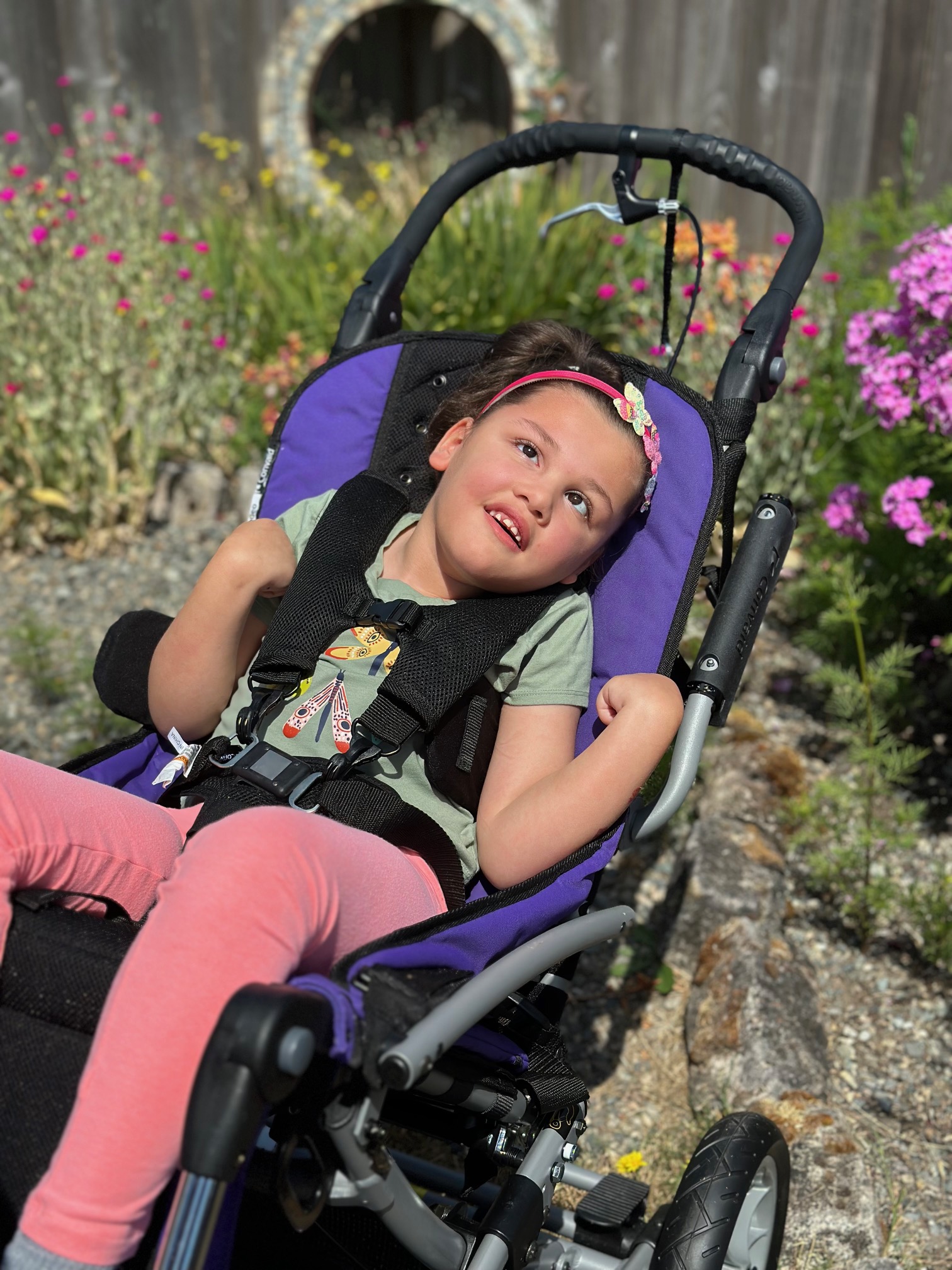The story of Amelia
Our daughter, Amelia, was diagnosed with CLN1 Batten Disease (neuronal ceroid lipofuscinosis) at 2 years old. Before learning of her diagnosis, we had never heard of Batten Disease. All we knew is that our daughter was deteriorating and we needed answers. Why was she suddenly not able to walk? Why was she losing verbal skills and losing interest in playing with toys? Why did she seem to have a vacant look on her face so much of the time? Genetic testing would soon provide the answer. The testing had uncovered gene mutations that cause a decrease or absence of the PPT1 enzyme. Amelia’s cells were not able to clear themselves of waste. Her cells were dying. It affects cells throughout her body, but the eyes and brain are especially vulnerable. Upon learning of her diagnosis, we desperately began searching the internet for CLN1 disease and quickly realized how cruel and devastating this diagnosis was. And the symptoms of the classic “infantile” form of the disease described our only daughter’s symptoms perfectly. The prognosis was heart-stopping: blindness, loss of all motor skills, progressive cognitive decline, seizures, g-tube feeding, and early death (typically in early to mid childhood). It is sometimes called childhood dementia.
Our lives were forever changed. The dream of having a healthy, active, “normal” child was gone.
Amelia is now almost 7 years old. She’s had many ups and downs over the years. Within the first six months of her diagnosis, she completely lost the ability to walk, crawl, and sit up on her own. She stopped laughing and smiling. She went completely blind. She has multiple seizures daily and is on several anti-epileptic medications. We had a g-tube placed when she was 4 years old. She had lost the ability to swallow effectively after a long seizure that landed her in the hospital (one of many hospital stays that year). We now use a wheelchair for Amelia and she requires equipment such as a suction machine, Theravest, cough assist, feeding pump, and pulse oximeter. Due to her need for 24-hour care and poor sleeping habits (also a hallmark symptom of Batten Disease), my husband and I have to be close to her at all times, often taking turns staying up with her during the night. One of us has to ride in the back seat with Amelia to keep her head in proper position in her carseat and to provide suctioning when needed. It is definitely not the life we envisioned for our beautiful girl, but we do it. And we do it with love.
Throughout this journey, we try to walk the line between grief for what was lost and what will never be, and what we still have to be thankful for. About a year and a half into this journey, Amelia started smiling again. And laughing. I can’t even describe how that filled our soul and gave us renewed strength. We have learned not to take a single thing for granted. Amelia isn’t able to tell us she loves us, but when she smiles at us, we feel it.
Amelia is a true rare disease warrior. She is tough, resilient, and deals with more challenges than most of us will ever face in our lifetime. She enjoys listening to Taylor Swift, floating in the hot tub, and going on outdoor adventures when the weather is nice. We spend our days singing and snuggling and doing arts and crafts. Sitting by the fire pit, going to the beach, or walking around the local nature preserve are also family favorites.
We have seen many children pass from CLN1, some much younger than Amelia. So we continue to advocate, educate and keep the hope that a treatment for children with this disease will become a reality. Amelia is our miracle, and we continue to have hope for her. She deserves it.
For more information on CLN1 and the 13 other forms of Batten Disease, you can visit www.BDSRAfoundation.org
To donate to CLN1 research, please visit www.haleysheroesfoundation.org/donate
For information and bios of other CLN1 children, search:
Facebook: CLN1 Batten Disease, Hope for a Cure
Instagram: CLN1Hopeforacure
